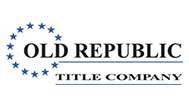Closing on a property transaction can be a long and complicated affair, during which time many errors can be made. The unwary buyer or seller could find themselves encumbered by a slew of problems if not properly prepared. There may even occur an issue arising from a task as simple as filing a document. Whether the error results from negligence or more nefarious causes, availing yourself of the proper tools is imperative. Find out below how to make use of the corrective deed and scrivener’s affidavit.
Mistakes and Defects
Before proceeding, the difference between a defect and a mistake should first be noted. A mistake occurs when a grantee or legal verbiage contains errors, ranging from misspellings to listing the wrong recipient. Conversely, a defect denotes the erroneous execution of the deed. This can include the lack of notary acknowledgment or appropriate witnesses.
When to Use a Scrivener’s Affidavit
Such an affidavit may only be employed if the mistake in question bears no effect over the vesting of the title. Examples of such situations include erroneous or invalid transference of lands which never belonged to the grantor as well as spelling errors and other typos within the legal description.
To be clear, a scrivener’s affidavit does not correct defects; its purpose is to make available in the public records information clarifying the intent of the deed to which it is referring. This affidavit becomes valid only after the affiant affixes his or her signature and the notary public provides acknowledgment thereof.
When to Use a Corrective Deed
If the original deed contains significant errors, a new deed must be executed. Called a “corrective deed,” it should contain conveyance verbiage that is identical to the original. In addition, a clause delineating why this corrective measure was necessary must be included.
A corrective deed is required when a grantor transfers property he or she once owned but does not any longer, or errors that exceed simple typos in significance. An example of this would be the documentation of an inaccurate measurement of distance. In addition, the aforementioned lack of witness(es) or notary acknowledgment, incorrectly recording the grantee’s name or clumsily rendering the legal language can each necessitate a corrective deed.
Rectifying Errors
One of the most common situations in which a corrective deed or scrivener’s affidavit is called for is the correction of legal description recorded on the original deed. If the grantor never held any interest in the property being conveyed, the deed is considered a “wild instrument.” Such an instrument can be rendered valid again if a scrivener’s affidavit or corrective deed is made a matter of public record. Doing so clarifies the intent of the original deed.
If the grantor of the original deed held an interest, either prior or current, in the property at the time of closing, but inadvertently conveyed the title in an incorrect manner, he or she may not modify or correct the terms of the transaction. The grantee will be required to give up his or her interest in the property.
The professionals at Marina Title offer their expertise and knowledge in answering any questions concerning corrective deeds, affidavits, title insurance and many other matters concerning Florida real estate. Contact us by email at info@marinatitle.com, or by phone at (855) 513-5880 .















